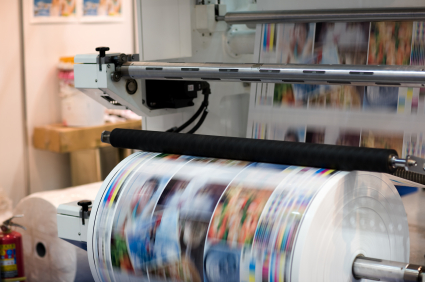Friday 21st February 2014

Congratulations! You've made your first art sale on Gallereo as a digital artist! The client's money comes through and - wait a second. They want a real, physical print, not a JPEG file - and it has to be absolutely pristine, premium quality, because you want them to be appreciating it for years to come, instead of having it fade and lose its lustre. With only a short turnaround time before you have to get the piece in the mail, what is your best option for producing a high quality print quickly? Fortunately for panicking artists and designers, there are a number of possible solutions.
Perhaps the quickest solution is to find a local print shop. This might be acceptable to some, depending on how much pride they take in their work - something above a Kinko's but not as nice as a proper offset printer. The problem with these places is that they tend to specialize in one-off projects that aren't intended for long-term display. They're produce a decent quality print, with decent colour accuracy and if you're lucky, they'll even be using a high-quality ink that won't start to fade after a couple of months of light exposure. But your choice of paper is going to be fairly limited, and they can get expensive quickly, eating up the profits from your hard-won sale.
The best choice for making art prints is to find a local offset printer. These are the companies and technologies that create most of (if not all of) the high-quality art prints you've ever seen or purchased. An offset printer is a huge device that can print massive quantities of an image or design in a relatively short period of time. Because their one job is printing, they typically offer an impressive array of paper choices in terms of weight, texture and size, and can meet any custom requirements or specifications you may have. The downside, of course, is that they are in high demand, and don't lift a finger if you only want a single copy of something. However, if you can establish a set number of prints that you plan to sell, in what's known as a 'limited run' - 250, 500, and 1000 are common numbers, although lower volumes mean each print is worth more - you can treat the initial outlay as an investment and make the money back over the course of each sale.
Alternatively, of course, the field of home printing has come quite a long way. Depending on the size of prints you plan to sell, many of the high-quality large format printers produced by famous brands like Epson and Canon can create beautiful prints right at home - but the cost of these printers can be a bit shocking when you first see the price tags, and the cost of ink refills can be almost as shocking. If you plan to make lots of prints, though, nothing beats the convenience of being able to simply click 'Print' from your computer chair, and then wrap up the finished piece a few minutes later. The quality may not be as good as an offset press, but the technology is always improving.
Optimally, of course, you'll have planned this out all in advance and advertised the style of paper and print quality as a part of your sales pitch on your Gallereo page itself - but don't worry, we've all been there at one point or another. Once the initial surprise at your first online art sale is over, you'll have a bit of time to take stock of the situation, source the best possible offset printer in your area and find out what papers they offer that would best suit your style of work. If all else fails, remember that the cost of these expenses can probably be written off on your taxes!
Posted on February 21st 2014 on 02:08am
 Congratulations! You've made your first art sale on Gallereo as a digital artist! The client's money comes through and - wait a second. They want a real, physical print, not a JPEG file - and it has to be absolutely pristine, premium quality, because you want them to be appreciating it for years to come, instead of having it fade and lose its lustre. With only a short turnaround time before you have to get the piece in the mail, what is your best option for producing a high quality print quickly? Fortunately for panicking artists and designers, there are a number of possible solutions.
Congratulations! You've made your first art sale on Gallereo as a digital artist! The client's money comes through and - wait a second. They want a real, physical print, not a JPEG file - and it has to be absolutely pristine, premium quality, because you want them to be appreciating it for years to come, instead of having it fade and lose its lustre. With only a short turnaround time before you have to get the piece in the mail, what is your best option for producing a high quality print quickly? Fortunately for panicking artists and designers, there are a number of possible solutions.



